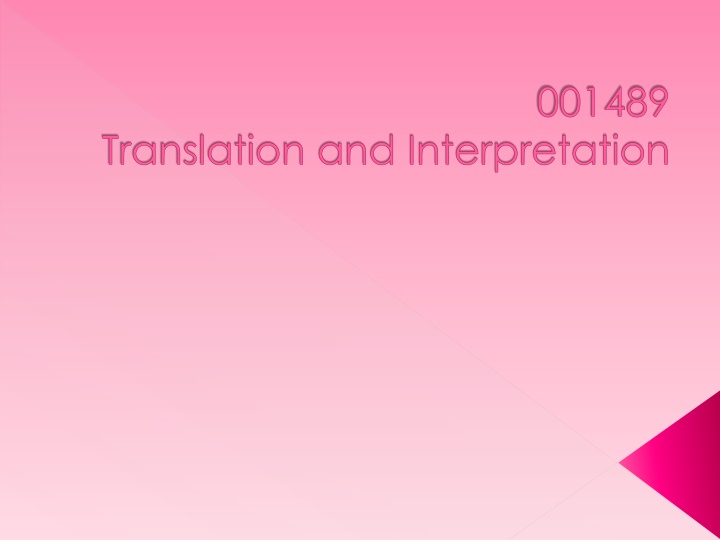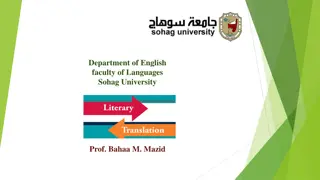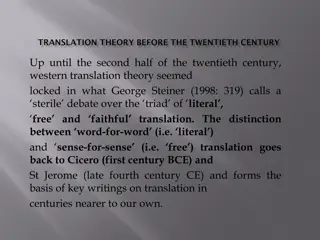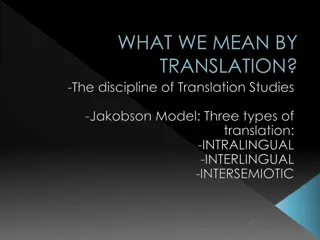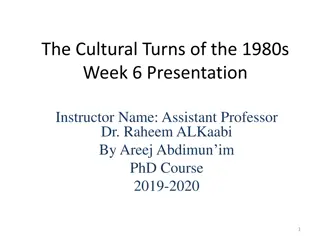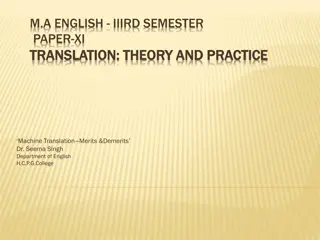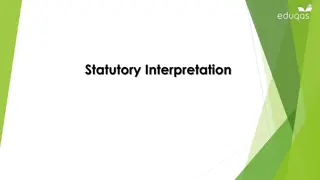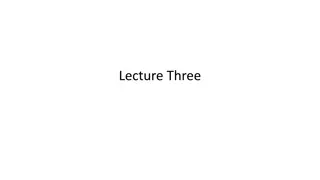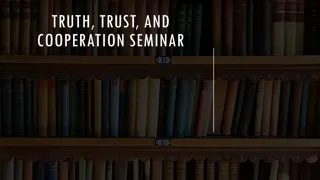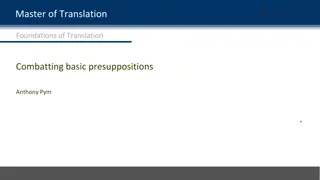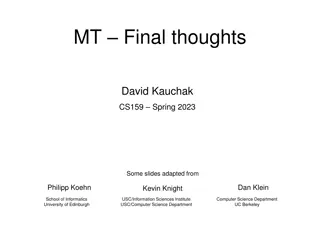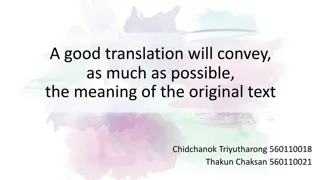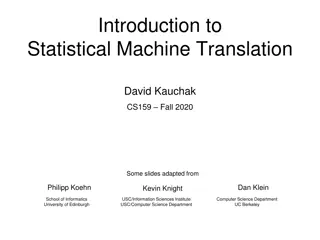Translation and Interpretation
Organize an independent study focusing on translation and interpretation, with components including rationale, literature review, methodology, text analysis, data analysis, and conclusion. Explore topics like translational phenomena and choose appropriate source texts for analysis. Tips provided on choosing texts, developing research questions, and selecting translation frameworks. Ideal for students interested in translation studies.
Download Presentation

Please find below an Image/Link to download the presentation.
The content on the website is provided AS IS for your information and personal use only. It may not be sold, licensed, or shared on other websites without obtaining consent from the author.If you encounter any issues during the download, it is possible that the publisher has removed the file from their server.
You are allowed to download the files provided on this website for personal or commercial use, subject to the condition that they are used lawfully. All files are the property of their respective owners.
The content on the website is provided AS IS for your information and personal use only. It may not be sold, licensed, or shared on other websites without obtaining consent from the author.
E N D
Presentation Transcript
001489 Translation and Interpretation
Components of Independent Study Rationale and Introduction Literature Review Methodology / Text Analysis (for translation and interpretation section only) Data Analysis Conclusion
Organization 1. Translation - Translation work with analysis of the translated text - you don t need to translate the whole text, just enough of it to get the whole picture and sufficient data for analysis 2. Comparative Study - Analysis of chosen translated text(s) using certain conceptual frameworks.
Finding Topic 1. Pick appropriate text well-written/translated , clear, interesting E.g. fictions, plays, documentaries, films or animations 2. Pick an issue you d like to study about Translational phenomena E.g. metaphor translation, pun translation, jargon translation, cultural translation, poetry translation Employing certain frameworks to help translate/ analyze the text E.g. employing Skopos/ Dynamic Equivalence linguistic frameworks e.g. theories in semantics, pragmatics, sociolinguistics and discourse analysis
Tips Choose a text that you are familiar with. Having read it/ about it before or having background on the subject matter Read A LOT of previous studies Know more abt the framework, methodology and data analysis Be able to adapt the frameworks/methods employed to your own study
Choosing Source Text Literary works Novels, plays, poetry Documentary writing Manuals, Instructions, Regulations Ads Textbooks Audiovisual media Film, TV show, documentaries
Set Up Good RQs RQs = crucial part of the proposal convince your advisor that your topic is coherent, interesting and feasible. Help outline the overall paper = what you must find out, eventually leading to conclusions Conclusions always come back to answer RQs
Choosing Frameworks For translation work Translation approach of the overall text Semantic/Communicative approach Skopos Equivalence Formal/Dynamic equivalence Textual/Pragmatic equivalence Translation Procedure Componential Analysis
Choosing Frameworks For Comp Study Translation Procedures Cultural terms Componential Analysis Linguistics Frameworks Cohesion and coherence Devices Presupposition Implicatures (Cooperative Principles)
Literature Review Make sure that you - understand everything you re about to study Text and Context Theoretical Framework What has been done on similar issues (i.e. text, linguistic aspect, theoretical framework) - know why you choose certain frameworks for your work and what are the advantages/disadvantages in using it.
Literature Review Good Lit Review should Have a clear presentation of the concepts Demonstrating good knowledge of the theory with clear examples given Be cohesive and coherent Having links between each chunk of sentences Ideas do not contradict with one another The theories chosen must be on the same ground It is not a collage of notecards being put loosely together
Literature Review Lacking sufficient knowledge on the theories used can result in Inaccuracy of data analysis Inability to carry on the research
Methodology (for Comp. Study) Data Collection Source How many items/pages/chapters are studied? Data Analysis Describe how the frameworks will be used to analyse the data
Text Analysis (for Translation) Help get a good understanding of every linguistic and cultural aspect of the ST Style Context Target reader etc. Selected model must be reviewed in Chapter 2
Nords Model of Text Analysis Intratextual Factors Extratextual Factors
Newmarks Model Intentions Styles Readership Attitude Setting Quality Connotation and Denotation
Data Analysis Close relationship w/ LitReview For translation work, this chapter might include translator s comment Problem-solving
Communication Project Presentation of the findings in a communicative channwl
Suggested Readings Baker, M. (1992). In Other Words. Baker, M. (2008). Routledge encyclopedia of translation studies. Bassnett, S. (2002). Translation studies. Fawcett, P. (1997). Translation and language Munday, J. (2008). Introducing translation studies theories and application. Munday, J. (2009). The Routledge companion to translation studies. Newmark, P. (1988). A textbook of translation. Newmark, P. (2008)Approaches to translation. Nord, C. (1991). Text analysis in translation. Venuti, L. (2000). The Translation studies reader.
